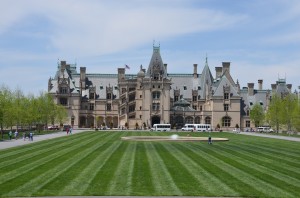Hopefully, summer’s extreme heat, drought, and in some areas flooding, are about over. Late summer and fall are opportune times to start a new or renovate your home lawn. Rainfall is usually plentiful and cooler day-night temperatures should spur a rapid grass recovery.
Your current lawn may be mostly bare ground with lots of weeds. Purchase new grass seed at garden centers or hardware stores. If your present lawn is primarily a warm season grass (bermuda, zoysia, centipede, or St. Augustine grass), purchase ryegrass for fall seeding and hold off on major lawn renovation until next spring or summer. If the lawn is a cool season grass, select either bluegrass, tall fescue, or perennial ryegrass. If you’re not certain, dig up a patch and bring to the local county Extension office for identification.
For small patches, loosen the soil surface with a garden rake and scratch grass seed into the top quarter inch of soil. Seeding rate is on the package. You may lightly sprinkle straw (not hay) over the seeded areas to hide seeds from hungry birds and to conserve surface moisture.
During initial inspection, kill all weeds with a herbicide containing glyphosate (such as Roundup™) and wait 7-10 days for the chemical to do its job. For major repair jobs, use a rototiller to renovate large dead areas. You’re now ready to till the top 6 inches of soil, rake level, disperse seeds, lightly rake into the soil, and cover with straw. You may also choose to lay sod for an instant repair. Installing sod is like laying room carpet.
Your final task is to fertilize the entire lawn with a high nitrogen-based fertilizer that also contains lesser amounts of phosphorus (P) and potassium (K). The fertilizer will not injure the newly seeded or sod areas. Fertilizer plus natural rainfall (or irrigation) makes for a rapid recovery.


 Posted in
Posted in 
